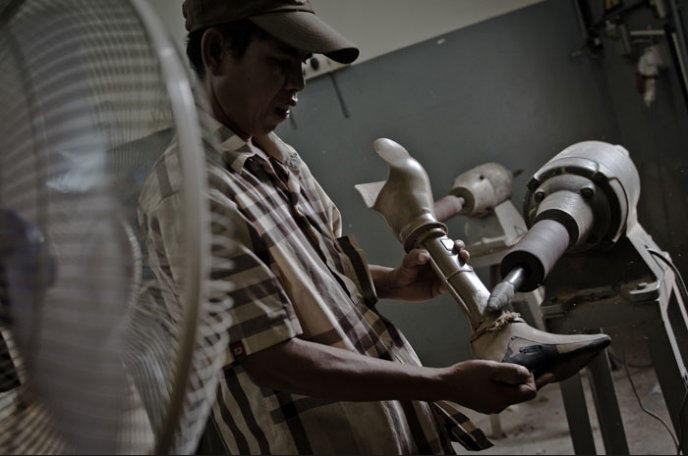













The magazine of the art-form of the photo-essay
“A free, really high quality photo-essay magazine. Fabulous!”
Stephen Fry. British actor, writer and film & documentary maker

Oct 2014 back issue
by George Nickels



A severe problem that Cambodia faces is the magnitude of landmines littered across provinces throughout the country.
This is the legacy of three decades of savage war that raged in Cambodia. All sides used landmines, manufactured in
China, Russia, Vietnam and the United States. Pol Pot, whose regime was responsible for the deaths of approximately
1.7 million Cambodians between 1975 and 1979, purportedly called land mines his “perfect soldiers.”
Recent estimates show that there may be as many as four to six million mines and unexploded devices left undetected
in Cambodia although some estimates run as high as 10 million. In the first nine months of 2012, 144 landmine
casualties were recorded, according to a report by the Cambodian Mine and Explosive Remnants of War Victim
Information System. Young children account for approximately half of all landmine victims.
Across the developing world, there are millions of people with disabilities who need physical rehabilitation services to
enable them to go to school, find work and participate in society. However, in many low income countries there is a
severe shortage of staff with the skills and experience to provide the rehabilitation services required. Whilst I have been
living in Cambodia, I have met a number of landmine survivors who have been keen to show me what has happened to
them, and explain the difficulties they face on a daily basis.
Cambodian Mine Action Centre systematically demine the country's provinces striving to eradicate the ever present
threat of Uxo's, landmines and cluster munitions. The North Vietnamese army laid the first landmines in Cambodia in
1967, and continued to do so throughout the Vietnam War period to protect bases and supply routes, which they
established along the border on Cambodian territory. The United States responded with covert operations from 1969 to
1973, dropping tons of bombs and laying mines well within neutral Cambodia.
Following the coup by General Lon Nol against Prince Norodom Sihanouk in 1970, war between Khmer Rouge forces
and the US-backed Lon Nol regime brought conflict and landmines to the rest of Cambodia. The Khmer Rouge used
landmines for military purposes and to seal off their harsh agricultural cooperatives in "liberated" zones. Lon Nol forces
relied heavily on mines towards the end of the war to strengthen defences. While in power from 1975 to 1979, the
Khmer Rouge used mines extensively along the borders with Vietnam and Thailand, turning the country into what was
called a "prison without walls". After 1979 guerrilla warfare continued. Mines were extensively deployed by all groups
across very fluid battle lines as a weapon of choice to protect territory, channel enemy forces to vulnerable positions,
and demoralize communities. Starting in 1985, millions of mines were laid in a 600-kilometer barrier along the Thai
border under the notorious K5 conscription program. Throughout the three decades of mine laying in Cambodia, it was
standard practice to lay much denser minefields than necessary, and to lay them not only in battlegrounds but among
civilian communities. Minefield location maps were generally not drawn, and as a result, mine laying frequently took
place in already-mined areas. Wet seasons caused mines to move or become buried, which further complicates the
task of locating and clearing them.
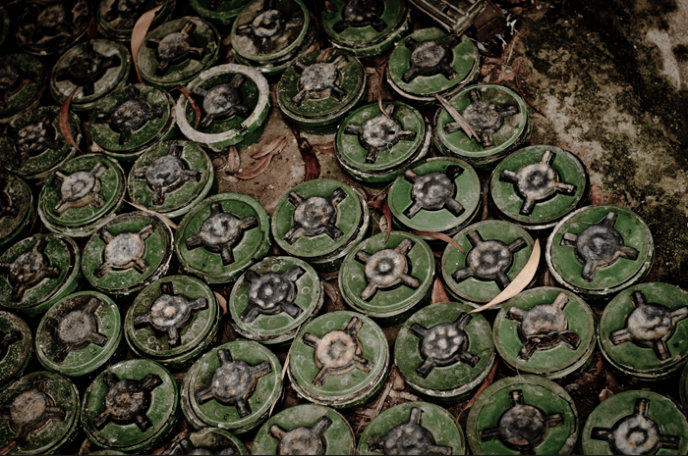
Pol Pot, whose regime was responsible for the deaths of approximately 1.7 million Cambodians between 1975 and
1979, reportedly called land mines his “perfect soldiers.”
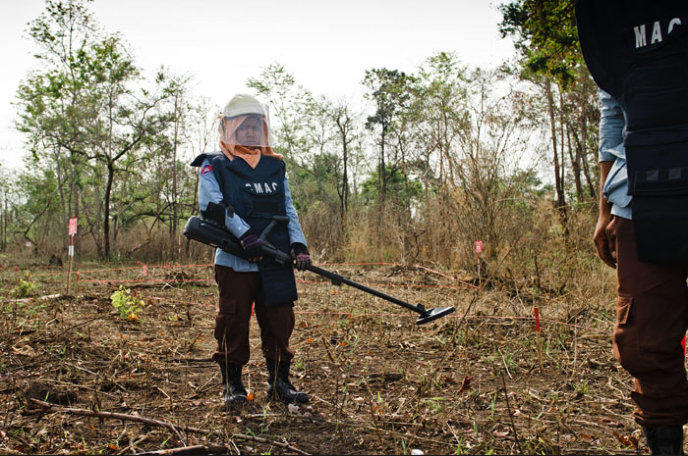
A female CMAC mine clearer covers her head with a towel to soak up the sweat in the intense Cambodian heat.
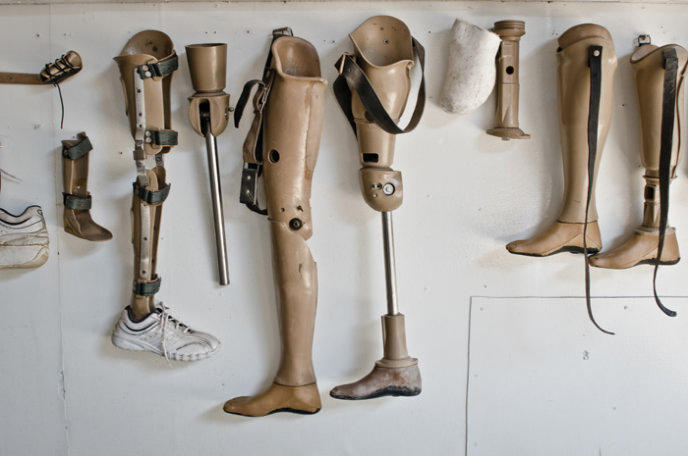
Prosthetic limbs on display in a physical rehabilitation in Siem Reap.
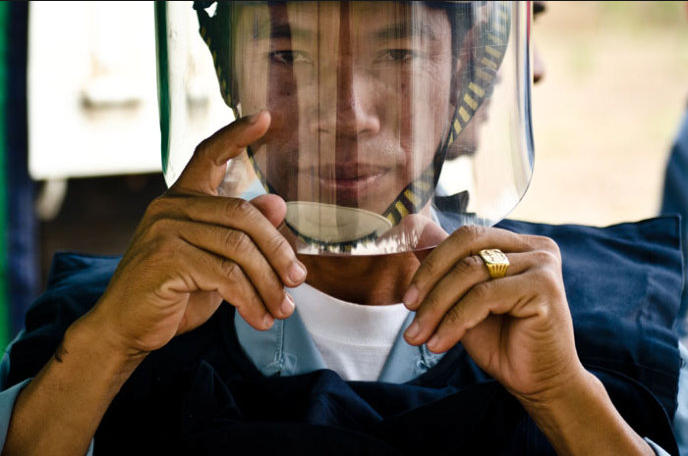
CMAC demining unit 2 operative.
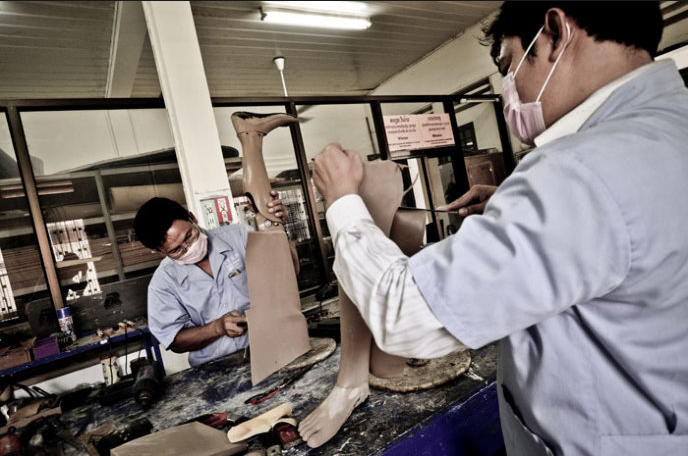
Head prosthetic technician Men Tharro in the process of making new limbs.
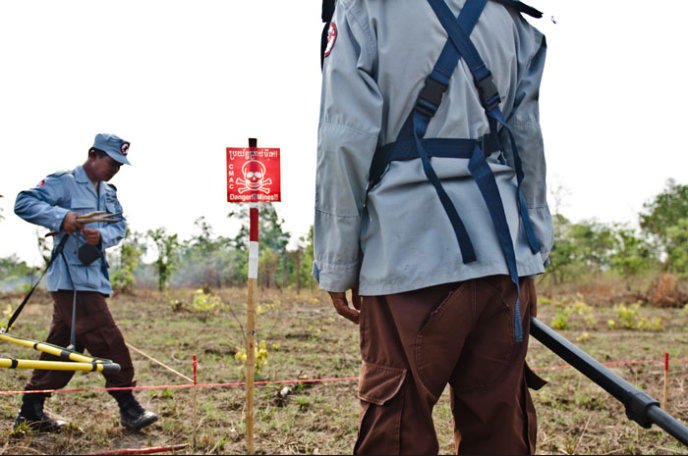
CMAC staff mapping out areas to later be cleared of all unexploded devices.
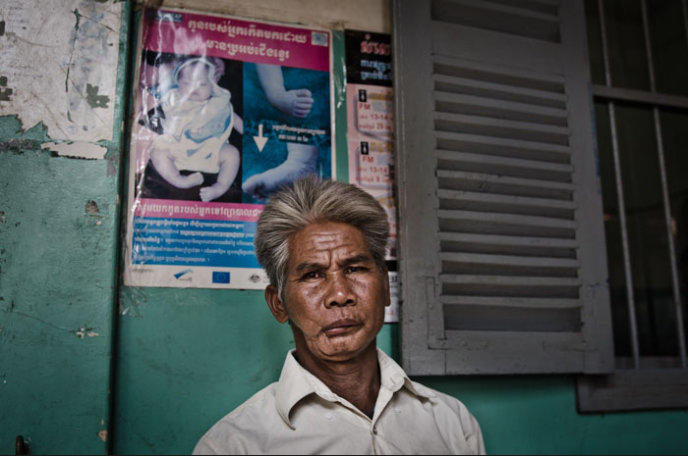
Mr Liay Doung aged 61 a former Cambodian government soldier lost his leg whilst on a special mission protecting a
high ranking South Vietnamese captain from Khmer Rouge forces in the area at the time. He stepped on a landmine
laid by the Khmer Rouge forces near Phnom Kulen mountain, Siem Reap province resulting in the loss of his left leg
and heavy shrapnel injuries. He has to support his wife, two sons and two daughters working as a farmer. The
Cambodian government in power at present compensate him with small sporadic payments of ten to fifteen dollars at
random times throughout the year.
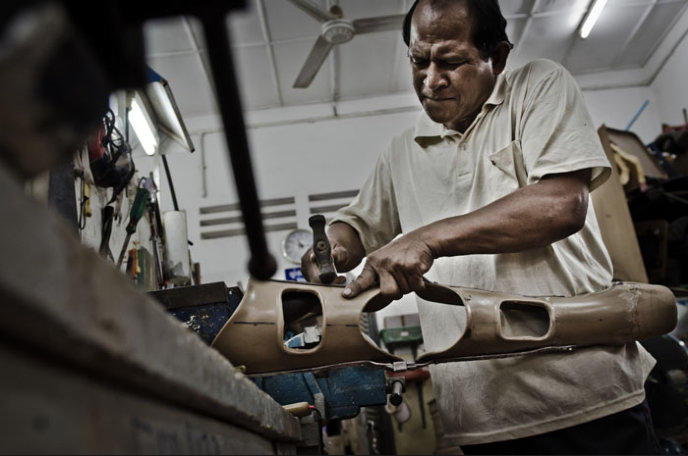
A prosthetics technician works putting the final finishing touches on a patients new leg.
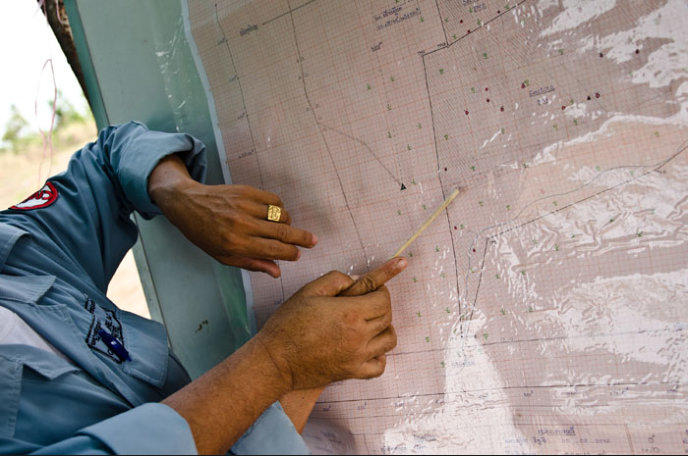
CMAC staff plan their days work on the minefield.
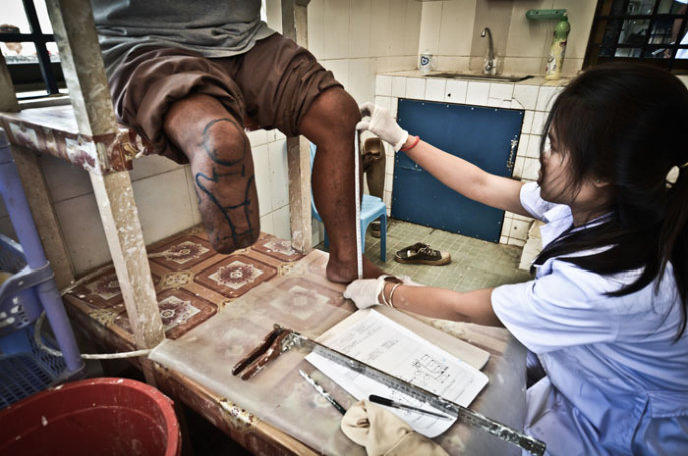
A patient in the process of having a new limb fitted.
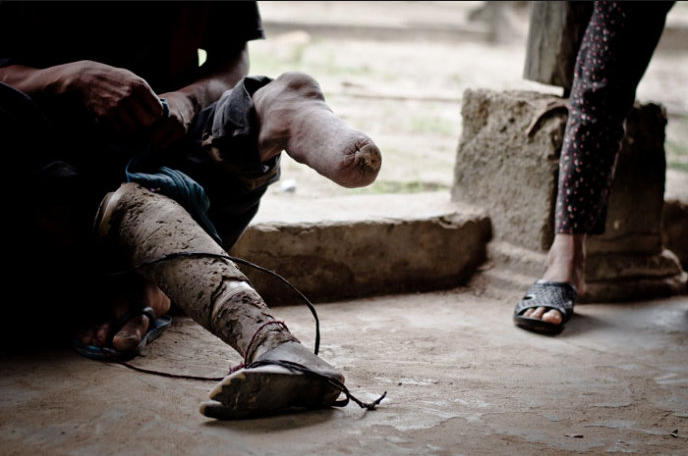
A landmine survivor reveals his stump during a rehabilitation session in a farming community in Battambang province.
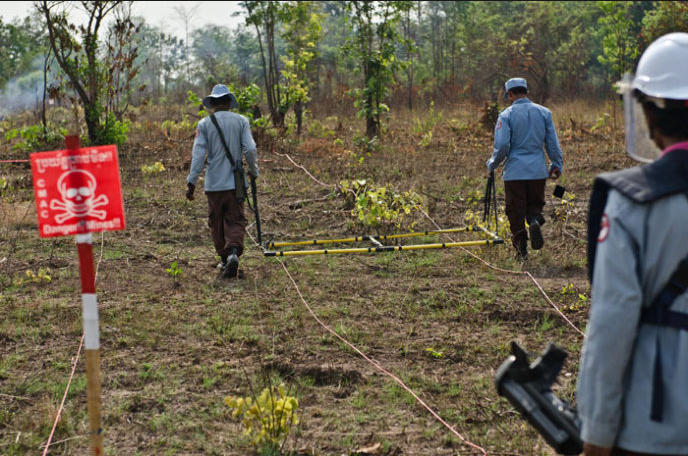
CMAC staff mapping out areas to later be cleared of all unexploded devices.
The number of landmine-related casualties in Cambodia has decreased in the last ten years, but still remains one of
the highest in the world.
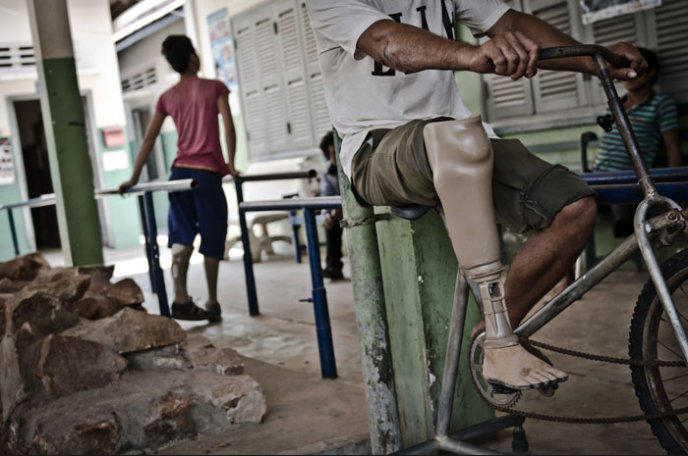
At the current rate of progress, it may take as many as 100 years to clear all the mines in Cambodia, and the UN
estimates that with current technology, it will take nearly 1,100 years to clear all the mines in the world.
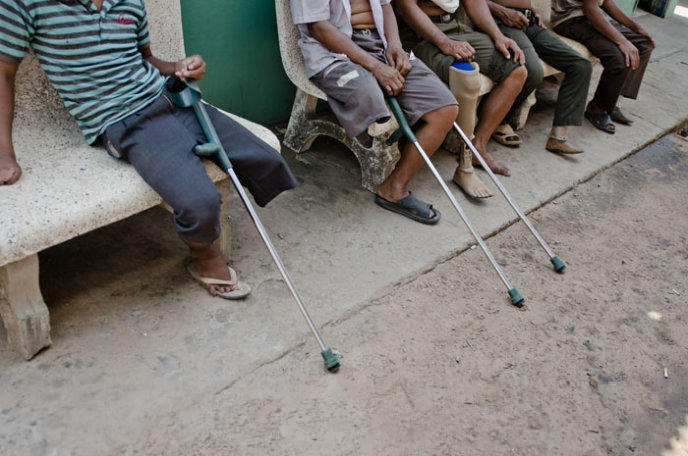
Landmine victims take a rest after their morning’s rehabilitation session. Siem Reap Province, Cambodia.

Prosthetic technicians at work welding patient’s new limbs. Siem Reap Province, Cambodia.
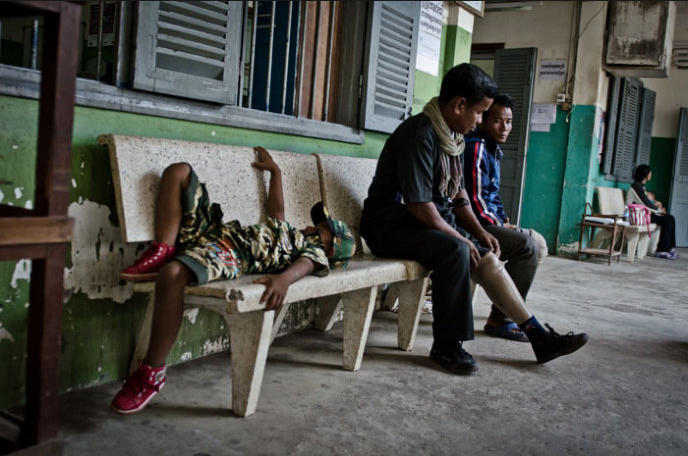

According to the Landmine Monitor 2013, Cambodia still contains over 700 square miles of UXO-contaminated land.
That’s an area roughly the size of the entire city of London.
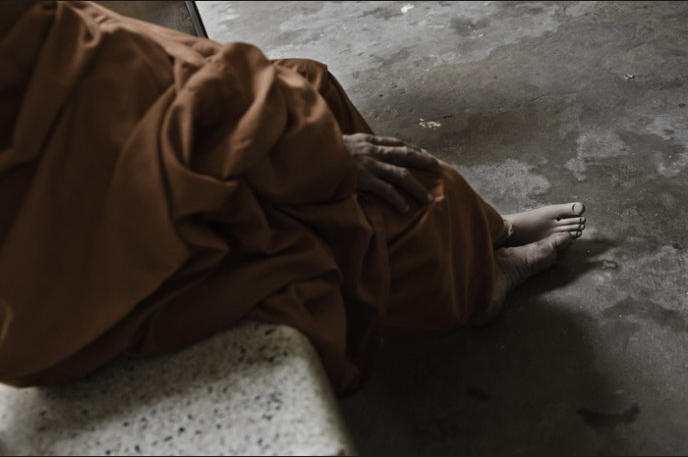
The number of landmine-related casualties in Cambodia has decreased in the last ten years, but still remains one of
the highest in the world.
